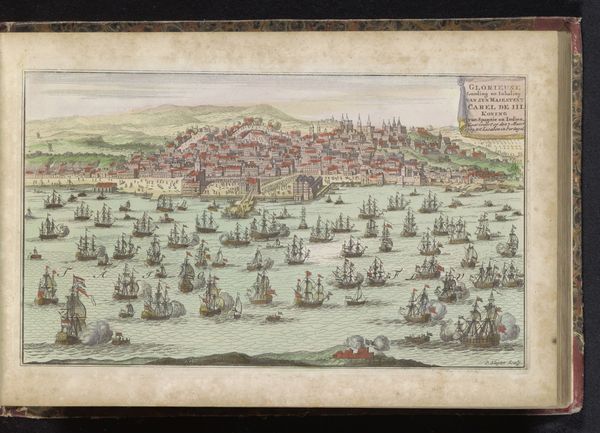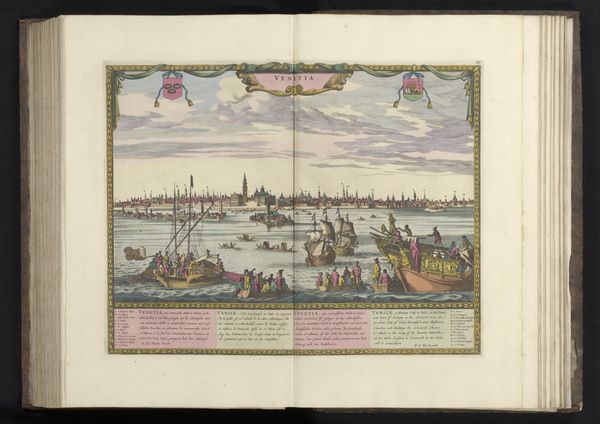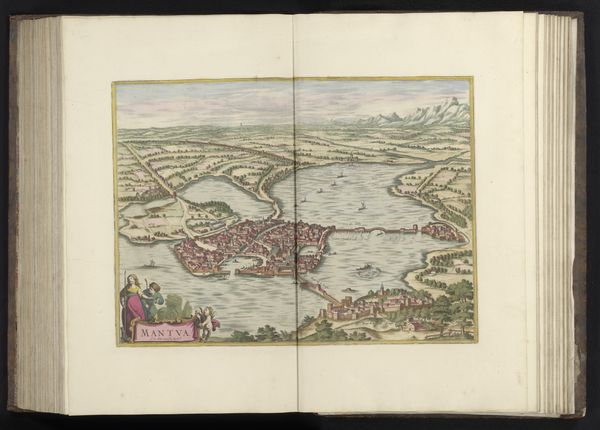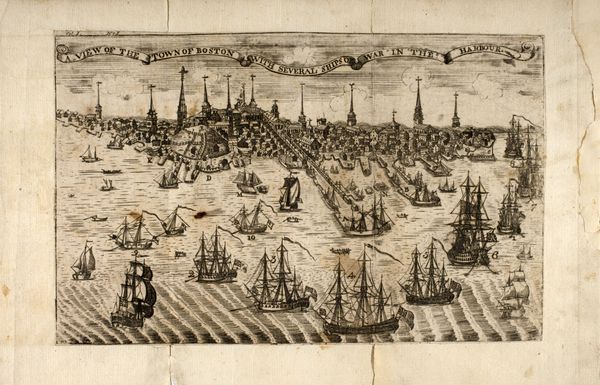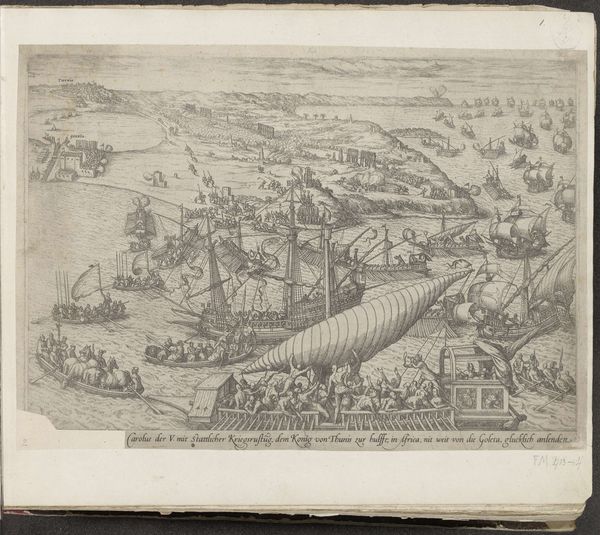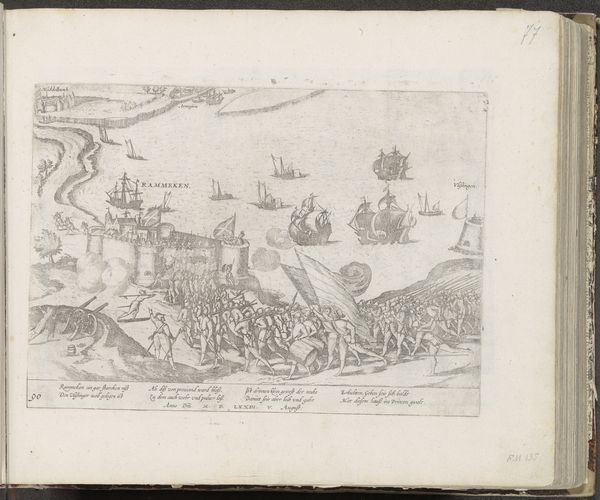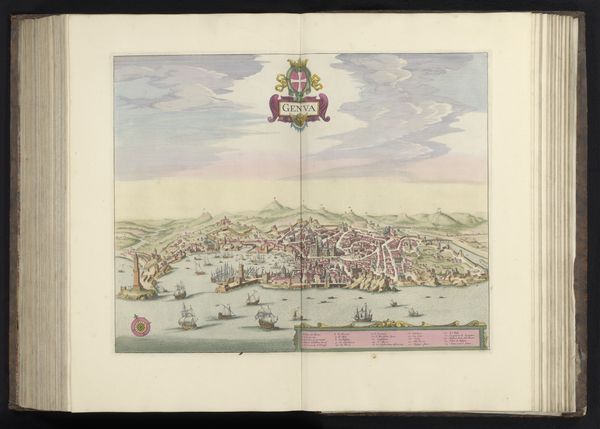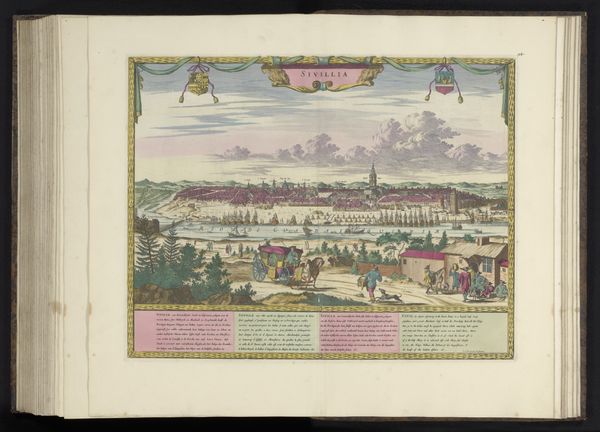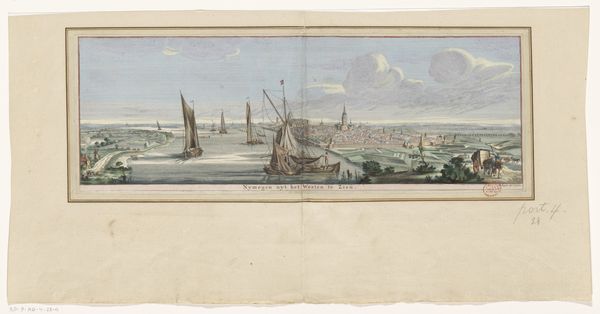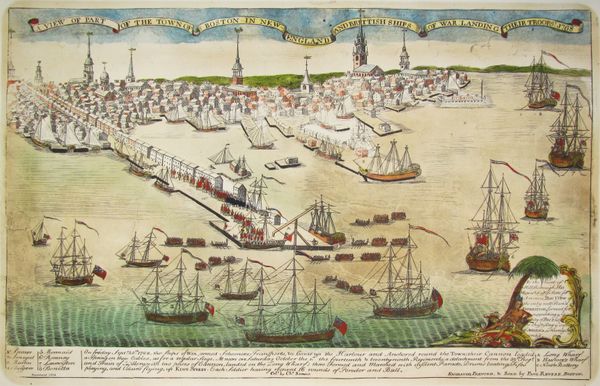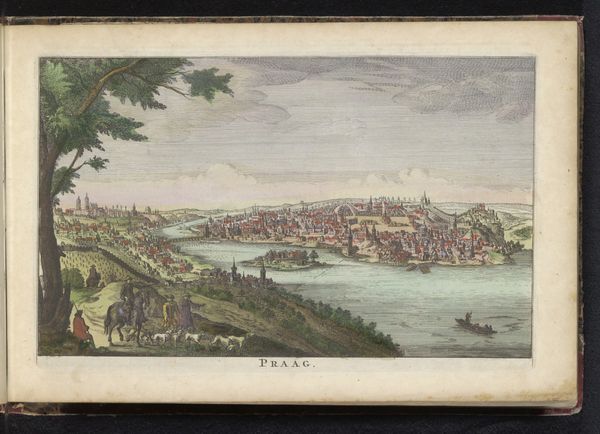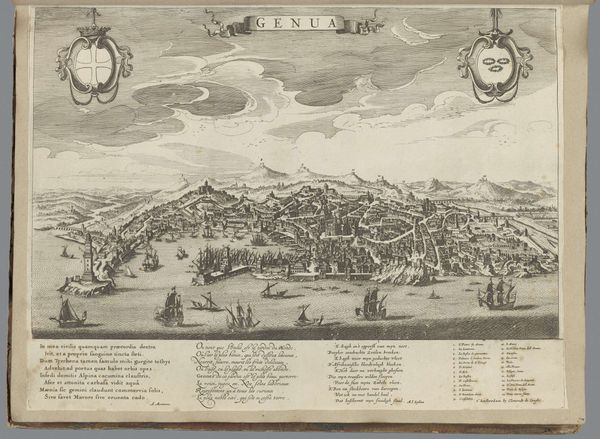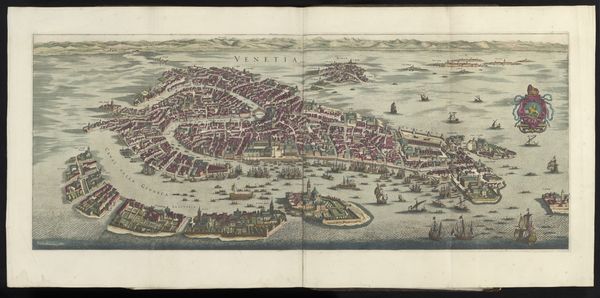
mixed-media, print, watercolor
#
mixed-media
#
baroque
# print
#
landscape
#
watercolor
#
coloured pencil
#
cityscape
#
mixed media
Dimensions: height 502 mm, width 1625 mm, height 532 mm, width 1675 mm
Copyright: Rijks Museum: Open Domain
Curator: Here we have "Gezicht op Bordeaux," or "View of Bordeaux," an anonymous work created between 1645 and 1701. It’s a mixed-media print with watercolor, offering us a birds-eye perspective of the city. Editor: Immediately, I'm struck by the bustling activity conveyed through the detailed ships on the Garonne River juxtaposed with the intricate depiction of the urban landscape itself. It evokes a powerful sense of a thriving, active port city. Curator: Yes, it’s more than just a topographical record. Note the careful placement of symbolic emblems: regal crests, one featuring the fleur-de-lis, suggestive of royal patronage or at least allegiance. These act as visual anchors, lending not just prestige, but layers of meaning to the overall composition. Editor: The baroque aesthetic contributes to that grandeur. It makes me wonder, who was the intended audience? The detailed rendering would surely appeal to merchants, but those emblems suggest a more politically engaged viewership as well. Curator: Indeed. And considering this period in Bordeaux's history – a time of fluctuating political control – such a piece could have served multiple purposes: documenting Bordeaux's prosperity, asserting dominance, or even subtly critiquing shifting powers through carefully chosen symbolic markers. Editor: I see how the arrangement could embody a very complex tension between documenting a landscape and also crafting an argument of the socio-political implications the cityscape represents. Even today the flags, crests, and ships can make statements in terms of social relations. Curator: Precisely. This intersection between representation and messaging is what gives such cityscapes lasting resonance. Visual echoes rippling through centuries. Editor: Reflecting on this piece has made me appreciate how something seemingly descriptive, like a cityscape, can be so deeply intertwined with political and cultural currents. Curator: Agreed. It reminds us to look beyond the surface representation, to unravel the visual language encoded within.
Comments
No comments
Be the first to comment and join the conversation on the ultimate creative platform.
